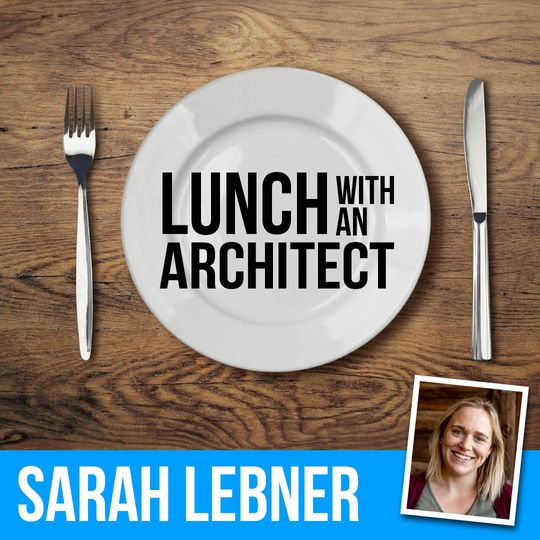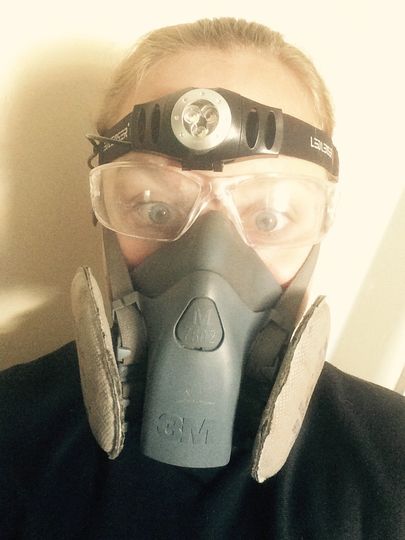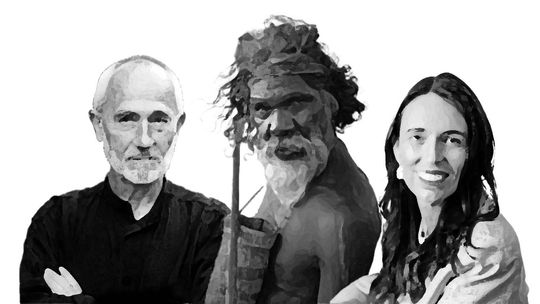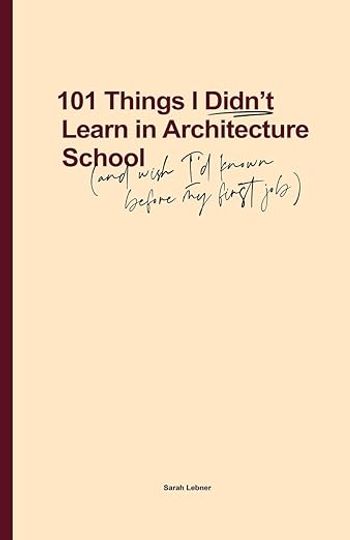Today we’re lunching with Sarah Lebner from Cooee Architecture, based in rural NSW. Sarah is an architect, mentor, and author, and we’re so excited to chat with her.

Thanks for joining us today, Sarah. Although this is just a virtual lunch, where do you think we would go if we got together for an IRL lunch? What’s your favourite lunch choice?
I would actually invite you here and cook up some eggs from our chooks with grilled veg from the garden, marinated cheese, and fresh bread.

I imagine that would looks something like this spectacular feast!
That sounds amazing! Do you have quite a bit of land?
Yeah, we moved back to our family farm two years ago.
Amazing! So, how are you enjoying rural living?
It’s great, we’re really enjoying being back. We’re fully rural here, with all the animals.

That’s awesome. How do you find that works with your practice and finding clients? Are you enjoying the rural lifestyle?
When we moved, some people were quite cynical, saying, “Oh, rural people don’t want an architect.” But that’s a load of rubbish. I think they just want someone who relates to them. Since I set up my practice to work around rural and regional people and projects, it’s been a perfect match. I’m working on some fantastic places and projects.
That’s great to hear. I’m from country Victoria originally, so I definitely know a lot of people who could benefit from an architect in a rural area but may not have great access. It’s nice that you’re offering that service.
What drew you to architecture in the first place?
When I was in Year 12, I’d narrowed it down to a list of three professions—architect, vet, and helicopter pilot. I’m a type-A personality, so I was looking at the pros and cons of each. I did work experience with a vet, who said I’d either be desexing cats my whole life or being called out in the middle of the night to cows calving in the country. So, I ruled that one out. Then I went in a helicopter and realised that people who get motion sickness probably shouldn’t be helicopter pilots. That narrowed it down to architecture pretty quickly. After some more work experience and open days, I realised it was a really nice mix of all my skills and interests.
That’s one thing I really like about architecture—it’s quite diverse. There’s a lot of different kinds of work you can do, which is nice.

Do you think, when it comes to architecture and design, or perhaps more broadly, that you have a very mild superpower?
I often tell students when I’m mentoring them that your mild superpower is something that’s really hard for you to see because it’s so inherent and natural to you that you don’t notice it. So, I have thought about it. I think mine might be organising ideas—whether that’s organising a client’s brief into a plan or organising useful information into an Instagram reel that people can understand.
One thing I noticed about your website and the way you write about your projects is that it’s very easy for people to understand and digest, which is something we try to do at Lunchbox Architect. Architects can sometimes have a tendency to over-explain things and use complex terminology, which, while impressive, can make it a bit opaque for the general public to understand what’s going on. I really appreciate the way you make your work accessible.
Thank you. It’s definitely helped working under a science communicator for a large chunk of my career to hone that superpower, if you like.

Tell me a little bit about your background there.
Before we moved back to the family farm, I was working at Light House Architecture and Science, which is owned by building scientist Jenny Edwards. She has a background in building science and science communication, which was a really amazing education for me over many years, particularly on the building physics side of things. We would track and test data from our projects, so we really knew the lived-in real results. Then, we took all of that and communicated it out to the industry and clients in an effective, digestible way.

Do you have a favourite thing about residential architecture?
Every now and again, you just have these moments where you remember that it’s such a privilege to have people trust you with a huge sum of money to create a home that will hopefully nurture them and their families for the rest of their lives. I hope I never get over that.
What was the first album you ever bought?
Shania Twain's Come On Over.
Amazing! It’s always fun to hear people’s answers to that, and I love Shania!
Is there a particular challenge when it comes to residential architecture that you enjoy?
I always thrive on finding the sweet spot between budget, brief, sustainability, buildability, and longevity. It’s like a puzzle—sometimes annoying but also really rewarding when you get it right.
Definitely. It’s one of those challenges where the magic happens, isn’t it?
Absolutely. It’s all about finding the best balance between all those elements.
If you were having your ultimate dinner party, who would be the four people from any time period that you’d most like to have?
This is always a tough question! But today’s answer would be: Jacinda Ardern, for her grace and efficiency in smashing glass ceilings; Peter Zumthor, the architect, because his work really resonated with me when I visited rural Switzerland; my late father-in-law, who never got to meet our children; and probably someone to feed my fascination with Aboriginal culture, maybe David Gulpilil.
That’s a great mix of people!

Is there a residential project of yours that you’re most proud of, and why?
I always come back to the very first project I mostly led on my own—a small, simple, solar-passive home called ‘Stray-Leaf’. Every time I visit that house, it’s such a delight and a reminder of what can be achieved with modest means. I’m also currently working on converting a grain silo into a high-end farm stay near Junee, which is a bucket-list project for me.
That sounds amazing! Do you prefer new homes or renovations, and why?
New homes are easier, but we all need to be doing more renovations. There’s so much value in existing housing stock—materiality, craftsmanship, embodied carbon. I’d love to see our cultural understanding of renovation shift towards deep retrofits rather than just facelifts.
I totally agree. Renovations can be extensive yet subtle, and they can completely change the way a house functions without increasing its footprint a lot.
Exactly. It’s about finding that balance and recognising the value of what’s already there.
What’s something about architects that you wish more of the general public knew?
I think two things: First, our knowledge and experience are quite varied, so it’s important to find an architect whose values and skill set match your own. Second, we really are a project ally. Residential architects do much more than just design—we help with master planning, budgeting, managing consultants, navigating approvals, finding the right builder, and even managing construction if needed.
That’s a really good point. I think it can be a daunting process for someone who’s never done it before, but understanding that you’re more of an ally or coach can make it easier.
What’s the best life advice you’ve ever received?
Serendipitously, about three times in the last 12 months, I’ve heard the same advice: as long as you stick to your values, you can’t go wrong. It’s relevant for clients planning their project, for students of architecture, and for how we conduct our life.

By removing a restrictive nib wall, Cooee Architecture created space for an expansive kitchen and living area which has become owner Jane's favourite space (for obvious reasons).
Frank Lloyd Wright or Le Corbusier, and why?
Frank Lloyd Wright, for his connection to place and culture, which resonates with me. He was also a mentor to Walter Burley and Marion Mahony Griffin, who designed Canberra, where I studied and lived for 15 years.
Are there any other architects you particularly admire?
I did the Pittwater Summer School with Glenn Murcutt, Peter Stutchbury, and Rick Leplastrier, and their focus on holistic sustainability and regional relevance has always resonated with me. Rick Leplastrier, in particular, stands out for his thoughtful approach to architecture.
When you’re designing a house, how do you think about its relation to the place it’s in?
First and foremost, it’s about the nature and science of the place—sun angles, slope, wind, water runoff, microclimate. Then, it’s about the culture of the place—whether the house is culturally appropriate, a good neighbour, and whether it belongs. Lastly, it’s about how we want to live in that place, from connecting to certain views to how we engage with outdoor spaces.
Is there a book you’d recommend to someone planning to build or renovate?
I’m glad you asked! I wrote a book called 101 Things I Didn’t Learn in Architecture School, which is a condensed summary of the industry and construction. It’s aimed at students and graduates of architecture but has also proven to be a great introduction for the general public planning a project.

It's a great book and very helpful for potential clients, students of architecture and even fully qualified architects! What made you want to write it?
I was really into the idea of spreading knowledge beyond the traditional one-on-one client model. The book was a great way to start that, and I’m looking into other resources to share my knowledge with a wider audience.
Wonderful, please let us know when you do, I’m sure our readers would find that very helpful.
Some say there are two types of architects: those who rework their thesis over and over, and those who explore new ideas with each project. Which are you?
I’m definitely in the first camp. My life’s work is a Venn diagram of environmentally sustainable, affordable, and awesome to live in. I could happily work on that thesis until the day I die.
It’s a great thesis to be working towards; I hope one day you can solve it!
Every project is its own solution, I guess!